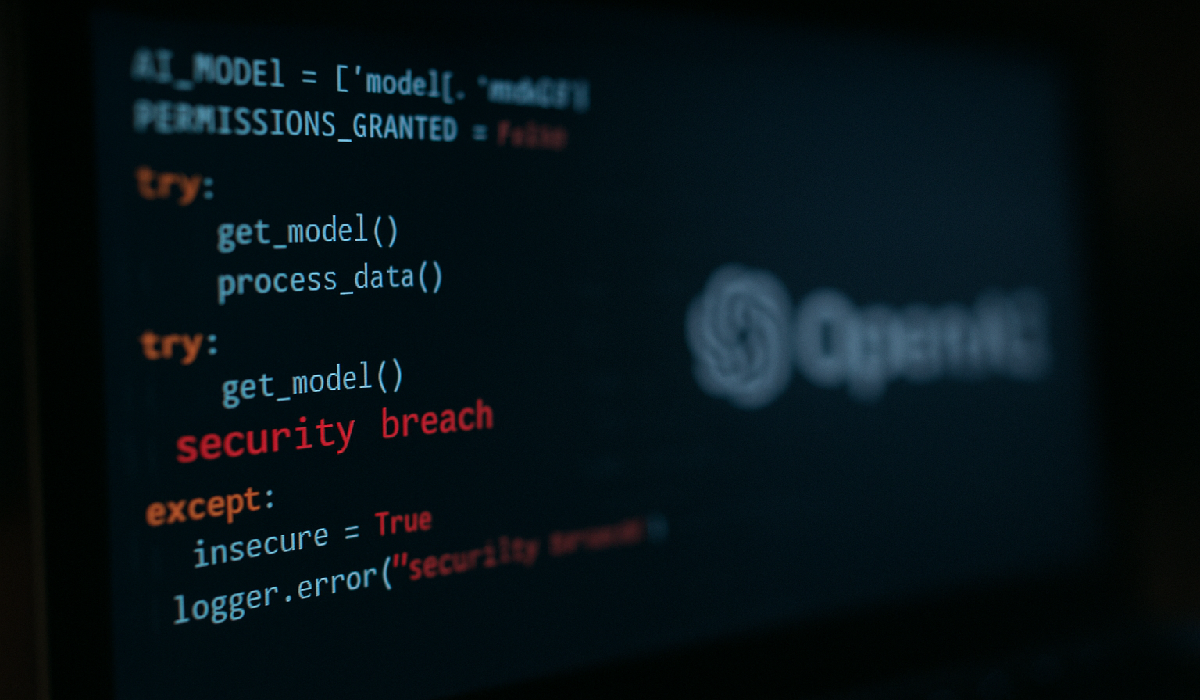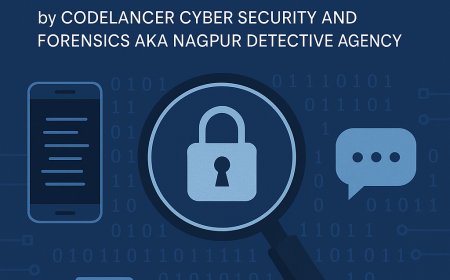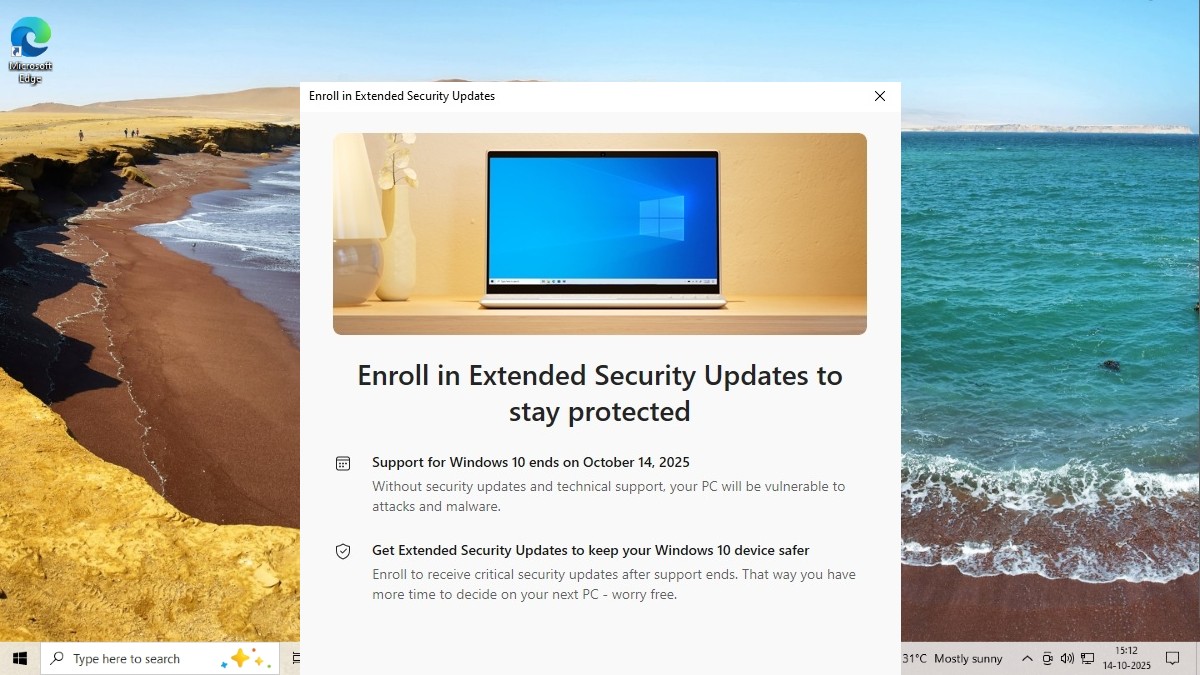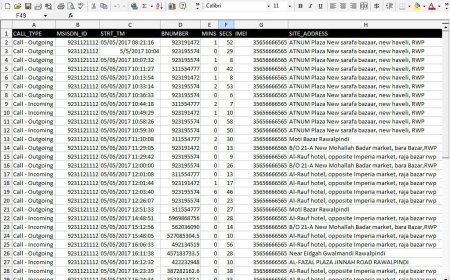How Law Enforcement Uses CDR to Solve Cases
Call Detail Records (CDR) play a pivotal role in law enforcement by providing crucial information for solving criminal cases. Learn how police and investigative agencies use CDR to track suspects, analyze communication patterns, and gather evidence that leads to successful case resolutions.

How Law Enforcement Uses CDR to Solve Cases
Introduction
In the era of digital communication, Call Detail Records (CDR) have become an indispensable tool for law enforcement agencies. CDR provides detailed data about calls, including time, duration, location, and contact numbers. By analyzing these records, law enforcement can track criminal activities, identify suspects, and gather evidence that contributes to solving complex cases.
What is Call Detail Record (CDR)?
A Call Detail Record (CDR) is a data log maintained by telecom providers that records information about telephone calls and SMS messages. CDR typically contains:
-
Caller and Receiver Information: Contact numbers of both parties.
-
Call Duration and Time Stamp: Start and end time of the call.
-
Location Data: Cell tower location of the caller and receiver.
-
Type of Communication: Voice calls, SMS, or data usage.
⚖️ Legal Framework for Accessing CDR
Law enforcement agencies can access CDR legally with proper authorization under judicial supervision. In India, Section 92 of the Code of Criminal Procedure (CrPC), 1973 empowers law enforcement to obtain CDR after obtaining approval from a magistrate.
How Law Enforcement Uses CDR in Criminal Investigations
✅ 1. Tracking Suspects and Their Movements
CDR helps track the movement of suspects by analyzing the location of the cell towers used during calls. This information helps establish the whereabouts of the suspect during the time of the crime.
✅ 2. Identifying Criminal Networks
Law enforcement uses CDR to map communication between multiple suspects. Analyzing call patterns helps uncover criminal networks, including terrorist cells, fraud rings, and drug cartels.
✅ 3. Establishing Alibis and Timelines
CDR analysis allows investigators to verify alibis by cross-referencing the suspect’s communication and location data with the crime’s timeline. This helps validate or disprove a suspect’s statements.
✅ 4. Locating Missing Persons and Victims
In kidnapping and missing person cases, CDR helps trace the victim’s last known location. Investigators analyze incoming and outgoing calls to identify possible leads that can assist in locating the victim.
✅ 5. Preventing and Investigating Terrorist Activities
CDR plays a critical role in counter-terrorism operations by identifying communication patterns between suspects and tracing suspicious international calls. It helps in detecting and preventing potential terror attacks.
Real-Life Cases Where Law Enforcement Used CDR Successfully
✅ Case 1: Mumbai Terror Attacks (2008)
CDR analysis played a significant role in identifying communication between terrorists and their handlers, which helped Indian security agencies trace the masterminds behind the attack.
✅ Case 2: High-Profile Kidnapping in Delhi
A kidnapped child was successfully located after investigators used CDR to trace the mobile phone used by the abductors, leading to the child’s rescue.
✅ Case 3: Financial Fraud Investigation
A large financial scam was unraveled when law enforcement used CDR to identify communication patterns between key suspects, leading to multiple arrests and prosecution.
Key Techniques Used in CDR Analysis by Law Enforcement
1. Geo-Fencing for Location Analysis
Geo-fencing involves setting a virtual boundary around a location and identifying all the numbers that made or received calls within that boundary during a specific time.
2. Pattern and Link Analysis
Investigators analyze CDR to establish links between suspects, identifying frequent communication and suspicious patterns.
3. Tower Dump Analysis
In cases where no suspect is identified, law enforcement performs a tower dump by retrieving all call records from a specific tower at the time of the incident to identify possible suspects.
4. IMEI Tracking for Device Identification
Investigators analyze CDR to trace the International Mobile Equipment Identity (IMEI) of a suspect’s device, which helps identify stolen or switched devices.
Benefits of Using CDR in Law Enforcement Investigations
1. Accurate Tracking and Surveillance
CDR helps law enforcement agencies track suspects with precision, improving the efficiency of surveillance operations.
2. Quick Identification of Criminal Networks
By mapping communication patterns, investigators can quickly identify and dismantle criminal networks.
3. Reliable Evidence in Court
CDR data serves as admissible evidence in court, strengthening the prosecution’s case.
4. Faster Resolution of Cases
CDR expedites the investigation process by providing real-time insights into suspect behavior and movements.
Challenges Faced by Law Enforcement in CDR Analysis
❗ 1. Data Privacy and Legal Concerns
Access to CDR is restricted by privacy laws, and law enforcement must obtain judicial approval before accessing CDR.
❗ 2. Data Overload and Complexity
Analyzing large volumes of CDR data can be time-consuming and complex, requiring advanced analytical tools.
❗ 3. Network Limitations
Accuracy of CDR analysis depends on the availability and quality of cell tower signals, which may be inconsistent in rural or remote areas.
Future of CDR in Law Enforcement Investigations
With advancements in Artificial Intelligence (AI) and Big Data Analytics, CDR analysis is becoming more efficient and accurate. Emerging technologies are enhancing law enforcement’s ability to:
-
Conduct Real-Time Location Tracking: Improving response time during emergencies.
-
Utilize Predictive Analytics: Anticipating criminal activities based on call patterns.
-
Implement Automated CDR Analysis: Minimizing manual effort and improving accuracy.
Conclusion: CDR as a Powerful Tool for Law Enforcement
Call Detail Records (CDR) have become an essential component of modern law enforcement, enabling investigators to solve complex criminal cases quickly and effectively. Whether it’s tracking suspects, verifying alibis, or uncovering criminal networks, CDR provides the factual evidence required to bring criminals to justice.
If you need expert assistance in CDR analysis for investigations, contact a trusted detective agency today.
What's Your Reaction?


































